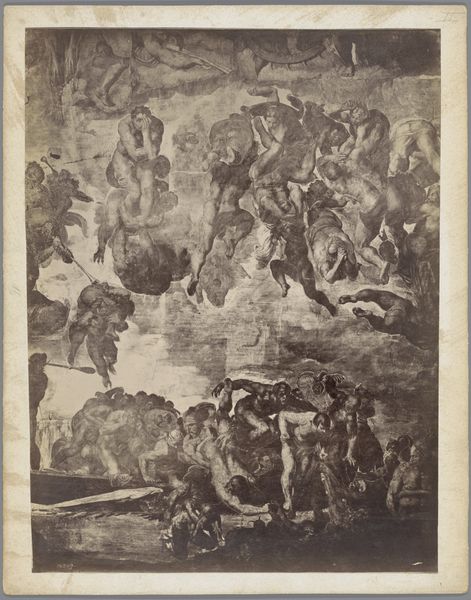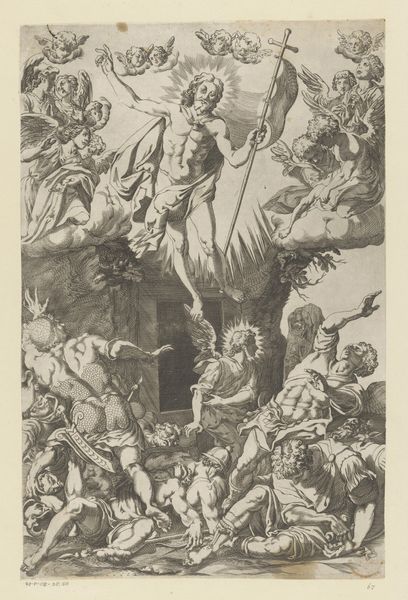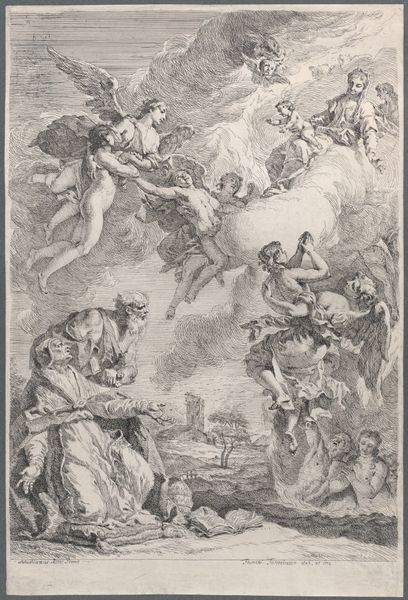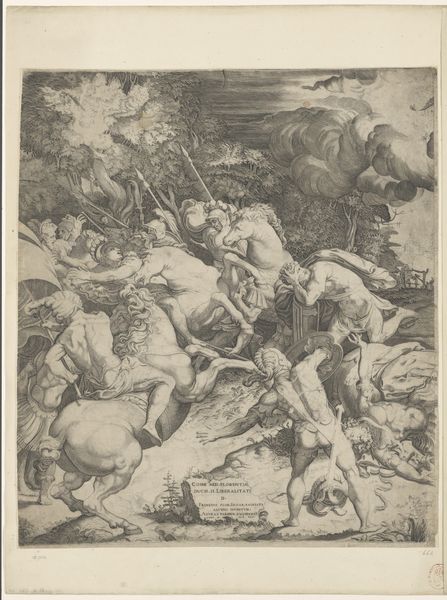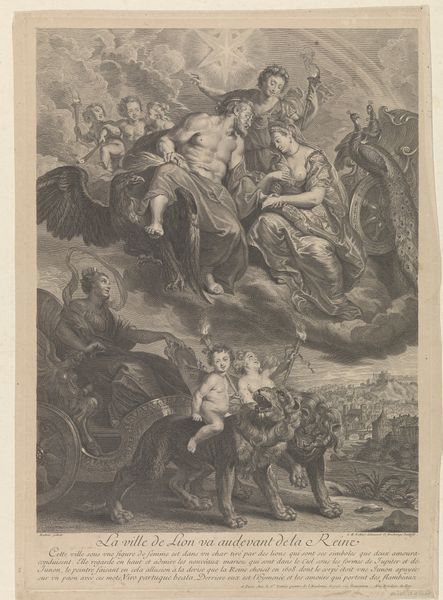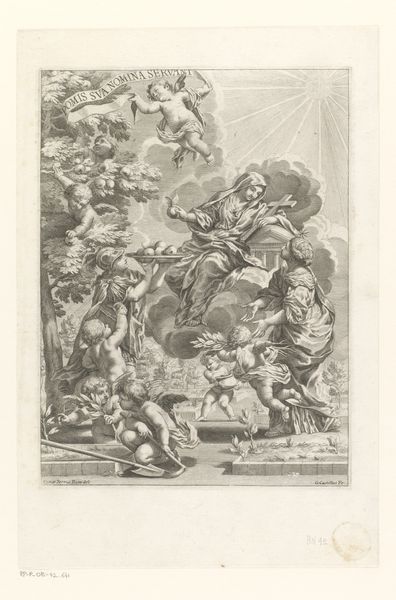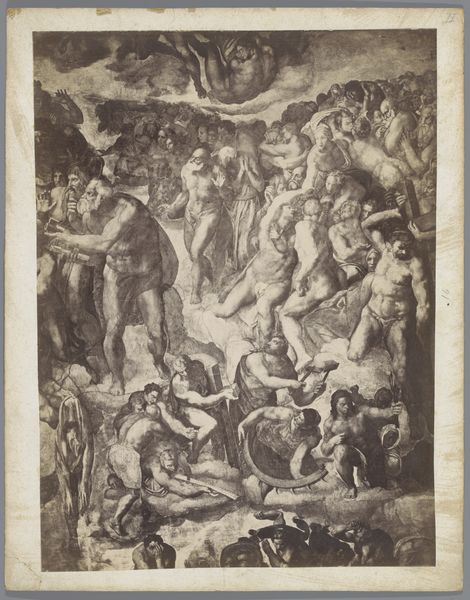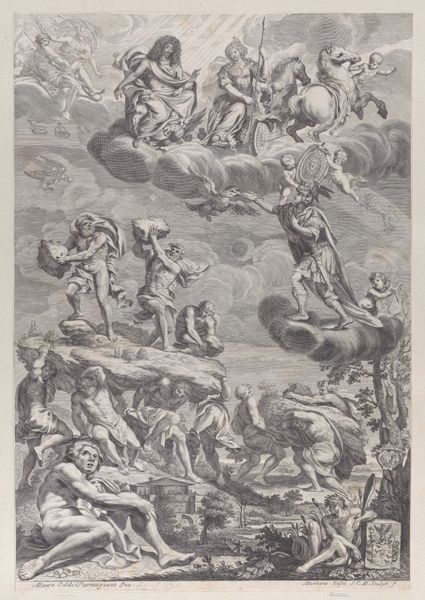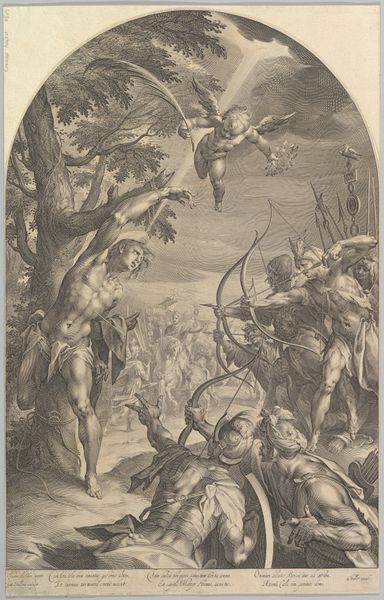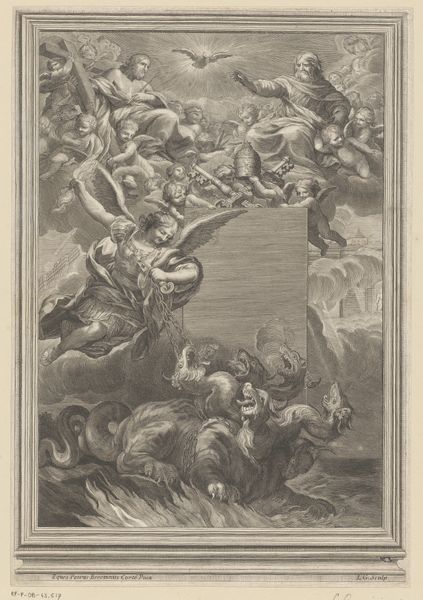
Fotoreproductie van een deel van de fresco's op de muur van de Sixtijnse Kapel te Vaticaanstad door Michelangelo, voorstellende het opwekken van de doden c. 1875 - 1900
0:00
0:00
anonymous
Rijksmuseum
print, fresco, photography, gelatin-silver-print, mural
# print
#
appropriation
#
fresco
#
photography
#
gelatin-silver-print
#
history-painting
#
academic-art
#
italian-renaissance
#
mural
Dimensions: height 406 mm, width 321 mm
Copyright: Rijks Museum: Open Domain
Editor: Here we have a photograph dating from around 1875-1900, taken of a section of Michelangelo's "Last Judgment" fresco in the Sistine Chapel. I'm struck by the… audacity of reproducing such an iconic work. How do you interpret this kind of appropriation? Curator: It’s crucial to remember that this photograph isn't just a neutral copy. The late 19th century was a period of intense ideological debate. Photography made art accessible to a wider audience but also changed its status. How does reproducing Michelangelo's fresco, traditionally a symbol of religious power, through photography, affect its meaning in the modern, increasingly secular world? Editor: So, you're saying the photograph challenges the fresco’s original authority? Curator: Exactly! The photograph flattens the original fresco’s depth, alters its color, and diminishes its scale. It reframes a monumental, spiritually charged artwork as a portable, reproducible object. And this was at a time of profound questioning of religious and political institutions. Do you think the photograph unintentionally democratizes the image, allowing for critical engagement, or does it merely become a commodity, divorced from its historical context? Editor: I see what you mean. Maybe it’s both? A wider audience *can* now access the image, but the photograph itself becomes another object circulating in a capitalist market. It makes me wonder who had access to these photographs, and what purposes they served. Curator: Precisely. Think about who commissioned it, who purchased it, and what values they projected onto Michelangelo’s original work and onto this photographic copy. Examining these dynamics reveals the complex relationship between art, power, and representation during a period of major social change. Editor: That's given me a lot to think about! I never considered the political implications of reproducing art this way. Thanks! Curator: It’s all about asking *who* benefits from seeing and possessing this image, and what narratives it reinforces or disrupts. Now go forth and question everything!
Comments
No comments
Be the first to comment and join the conversation on the ultimate creative platform.

